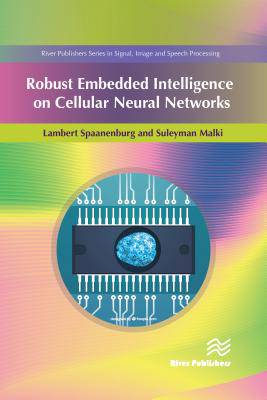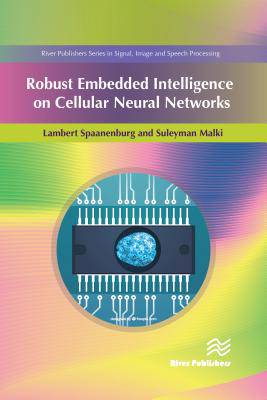
- Retrait gratuit dans votre magasin Club
- 7.000.000 titres dans notre catalogue
- Payer en toute sécurité
- Toujours un magasin près de chez vous
- Retrait gratuit dans votre magasin Club
- 7.000.000 titres dans notre catalogue
- Payer en toute sécurité
- Toujours un magasin près de chez vous
Robust Embedded Intelligence on Cellular Neural Networks [cancelled]
Lambert Spaanenburg, Suleyman Malki
114,95 €
Description
Machine Intelligence (MI) is the motor that drives the modern information-rich society. Supercomputing and parallel coding have made MI programs feasible and the theoretical base of MI has matured. Graphical Processors (GPs) have found new life as carrier for low-cost supercomputing. The road towards lower cost and size leads to embedding systems, such as self-driving cars and intelligent houses. Machine intelligence has not only opened many disruptive venues but given simultaneously a lot of anxiety. Compared to the many accidents in the early days of automotive traffic, the few problems with the TESLA cars are already sufficient for major concern. Evidently, research is still required to bring MI on the appropriate safety levels that rule the type tests for acceptance on the European automotive market. In the ACM Turing Award 2018, Hennessey and Patterson prophesize the breakthrough of Domain-Specific Processor. A typical example is the modern vision hardware in the automotive domain. Such applications bring collectively self-driving in reach for safety concerns. It features a domain-specific mix of hardware and software. Hardware can be correctly designed and manufactured and will not change afterwards. Software can be formally proven but efficiency requires to keep it close to the platform. Robust Embedded Intelligence on Cellular Neural Networks makes the reader familiar with the mathematical and electronic techniques to turn a data-driven problem into a safe embedded solution. In particular, it treats aspects on Cellular Neural Networks (CNN) for reliable visual recognition in a wide range of practical applications, highlighting vein feature extraction and license plate recognition.
Spécifications
Parties prenantes
- Auteur(s) :
- Editeur:
Contenu
- Nombre de pages :
- 350
- Langue:
- Anglais
- Collection :
Caractéristiques
- EAN:
- 9788770221009
- Date de parution :
- 05-03-21
- Format:
- Livre relié
- Format numérique:
- Genaaid
- Dimensions :
- 152 mm x 229 mm







